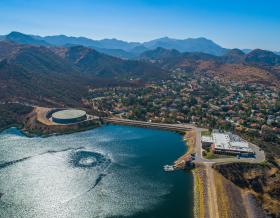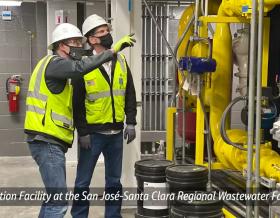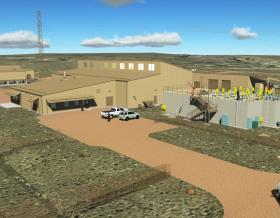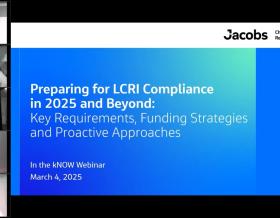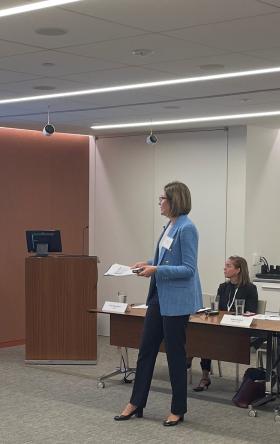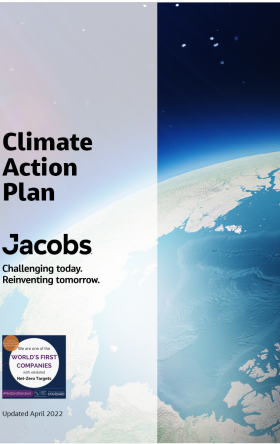
With 37 years of planning experience, Ian Fletcher has tackled key infrastructure challenges across sectors.
For the past 17 years, he’s focused on securing approvals for some of the U.K.’s most complex programs, including the Thames Tideway Tunnel and Southampton to London Pipeline.
Major infrastructure demands bold problem-solving and deep collaboration—two hallmarks of Ian’s award-winning career. He has led six major development consent orders (DCOs), the planning and approval mechanism for nationally significant infrastructure projects (NSIPs).
Now, as civil nuclear energy becomes a Critical National Priority for the U.K., Ian is bringing his consenting process skills alongside Jacobs’ wider nuclear capability, helping guide projects through the high-stakes planning process.
In this Q&A, Ian shares insights on how effective consenting can accelerate nuclear development and what’s ahead for the first small modular reactors (SMRs) in the U.K.
How does getting the consenting process right help nuclear projects succeed?
DCOs come with numerous commitments and conditions. It’s about getting the details right to ensure better implementation. In civil nuclear, developers face multiple hurdles, from financing to strict regulatory requirements. Planning is one of the most visible, and often most challenging, parts of the process, especially as it provides the public the clearest opportunity to weigh in.
Successful consenting sometimes means pushing back, even on client requests. The key is knowing when to say yes and when to say no to protect long-term project outcomes. That decision-making depends on experience—especially in surveying, mitigation and design— where the greatest cost impacts are often defined.
One key lesson: aim to retain the input of staff from consenting through to implementation. That continuity helps ensure better decisions at the planning stage that support smoother delivery later.
How does consenting for small modular reactors (SMRs) differ from past civil nuclear projects?
The draft National Policy Statement for Nuclear Energy (NPS EN-7) consultation outlines updated planning guidance for all civil nuclear projects, including SMRs. Surprisingly, it mirrors many elements from the 2011 NPS—such as rules about avoiding high-population density areas. However, the new draft is more stringent: instead of balancing discretionary and exclusionary criteria, all standards must now be met.
The upside is that all civil nuclear proposals benefit from their designation as a Critical National Priority, which is likely to reduce approval timelines.
Unlike bespoke projects like Hinkley Point C, SMRs are modular and repeatable—potentially streamlining design, construction and planning. They also don’t require coastal locations; if supporting infrastructure exists, lakes or rivers can provide necessary cooling.
What are the biggest challenges in consenting and building SMRs?
This has never been done before in the U.K, and there only a handful which have been consented and are under construction globally. That uncertainty drives risk and regulatory complexity. Securing development consent is just one hurdle—SMRs also need regulatory justification from the Department for Environment, Food and Rural Affairs and technology approval from the Office for Nuclear Regulation.
Even with more location flexibility, coastal sites are still likely—and that means environmental studies, especially on marine wildlife, will remain essential.
We also lack a complete, system-level solution for the long-term storage of high-level nuclear waste.
On the positive side, a new planning and infrastructure bill under consideration includes a proposal to remove all statutory requirements for consultation. Now, the U.K. Government has made it clear that doesn't mean that they want people not to consult. They are removing some of the legal jeopardy around consultation. Previously, this has driven promoters to ‘over-consult’ to ensure they comply with the legal tests. It has the potential to speed things up as it will reduce the number of documents needed.
How is your team supporting planning reform and accelerating project delivery?
We’re working closely with key partners and stakeholders to define and share best practices, including with the Planning Inspectorate and Government- through consultations and industry bodies such as the National Infrastructure Planning Association (NIPA). Our contribution has also led to the improvement of consultation processes and turned industry firsts into guidance documents. An example of this is the recent NSIPs Advice on Preparing Applications for Linear Projects, which features best practice from projects such as Tideway, where Jacobs led one of the largest and most complex DCOs in the country.
We recently developed a summary checklist for the DCO acceptance stage to ensure applications are high-quality and optimized for delivery—improving outcomes from the start. This has recently been rolled out successfully to a major energy client- the key benefit of the checklist is in breaking down tasks into small parts, which can then be assigned to owners: this ensures feasibility and accountability.
About the interviewee

Ian Fletcher is a leading authority on DCOs for major infrastructure projects, with a career spanning the Planning Act 2008's inception. His portfolio includes the Thames Tideway Tunnel, Hinkley Point C grid connection, and multiple solar DCOs. These projects have earned several honors, such as the Royal Town Planning Institute (RTPI) Silver Jubilee Cup and the National Infrastructure Planning Association (NIPA) Project of the Year Award. From 2010 to 2024, he served on the board of the NIPA and is recognized as a key voice in U.K. infrastructure planning.



